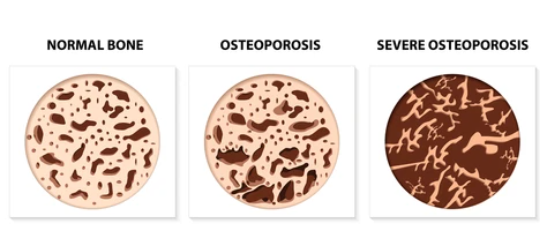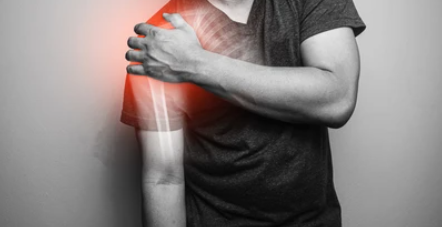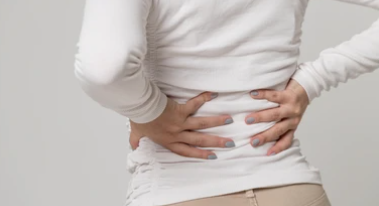Every year on October 20th, World Osteoporosis Day (WOD) is commemorated around the world to raise awareness about osteoporosis prevention, diagnosis, and treatment.
Understanding osteoporosis?

Osteoporosis is a disease that causes bones to weaken and break more easily, increasing the risk of fractures, particularly in the spine, hip, and wrist.
Who is at risk for osteoporosis?

Women are more susceptible to osteoporosis than men, particularly after the age of 50. Your body generates new bone faster than it breaks down old bone when you’re young, so your bone mass increases. This process slows after the early twenties, and most people reach their peak bone mass by the age of thirty. Bone mass is lost faster than it is formed as people age.
Risk Factors and Causes of Developing Osteoporosis

There are numerous risk factors that increase your chances of having osteoporosis. The risk of osteoporosis fractures rises with age for everyone. Women over fifty or postmenopausal women, on the other hand, are at the greatest risk of having osteoporosis. Because menopause reduces the production of estrogen, a hormone that protects against excessive bone loss, women lose a lot of bone mass in the first ten years after menopause.
Bodyweight and Bone Structure
Petite and skinny persons are more likely to develop osteoporosis than people with higher body weight and larger frames because they have less bone to lose.
Family History
You may be at a higher risk of having osteoporosis if your parents or grandparents have shown signs of the condition, such as a fractured hip after a minor fall.
Medical Conditions and Medications
If you have or have had any of the illnesses listed below, some of which are linked to abnormal hormone levels, you and your healthcare provider should consider getting an osteoporosis screening as soon as possible.
- Overactive thyroid, parathyroid, or adrenal glands
- Celiac disease, or inflammatory bowel disease.
- Blood diseases. Some medications might cause bone damage and osteoporosis as a side effect. Steroids, breast cancer treatments, and medications for treating seizures are just a few examples.
Signs and Symptoms of Osteoporosis

Osteoporosis usually causes no symptoms. It’s for this reason that it’s sometimes referred to as a silent disease. People with osteoporosis are generally unaware of their condition until they have a fracture. However, you have to watch out for the following:
- Bone fractures
- Loss of height
- Stoop or bend posture
- Shortness of breath
- Lower backpain or neck pain
What are the complications of osteoporosis?
The most significant effects of osteoporosis are bone fractures, particularly in the spine or hip. A fall is the most common cause of hip fractures, which can result in disability and even an increased risk of death within the first year after the injury. Even if you haven’t fallen, you may have a spinal fracture. Back pain, height loss, and a hunched forward posture can all arise from the weakening bones that make up your spine (vertebrae) to the point of collapse.
Bone Density Test
For some people, the first indicator of osteoporosis is noticing that they are growing shorter or that they are easily breaking bones. Don’t wait until it’s too late to check for osteoporosis. A bone density test can be used to determine how strong your bones are. A bone mineral density test measures how dense your bones are in comparison to the bones of a healthy young adult. A T-score is a test result that shows you how sturdy your bones are and if you have osteoporosis or not.
How Can I Keep My Bones Strong and Prevent Osteoporosis?
There are things you can do at any age to keep your bones strong. It is critical to consume calcium and vitamin D-rich meals. Weight training, walking, hiking, jogging, climbing stairs, tennis, and dancing are all examples of regular weight-bearing exercise. Avoid twisting your spine or leaning forward from the waist if you have osteoporosis, such as traditional sit-ups, toe touches, or swinging a golf club.
Can I Avoid Falling?
A simple fall can result in a fracture if your bones are weak. This may mean a visit to the hospital and possible surgery. It could also mean being bedridden for an extended period of time, particularly in the case of a hip fracture. As a result, it is critical to avoid falls.
Avoid falls inside your home.
Throw rugs, as well as loose wires and cords, should be kept off the floor. If you have mats, carpets, or area rugs, only use non-skid items. Ensure that your lighting is bright enough for you to see clearly. Avoid using cleaners that make your floors slippery. In the bathroom, use grab bars, and in the stairwell, use railings.
Avoid falls outside your home.
Make sure that all spaces outside your home have appropriate lighting. Use a backpack or other bag that allows you to keep your hands free. Maintain a clean and clutter-free environment outside.
Men Can Have Osteoporosis
Osteoporosis is can affect both men and women. Men are less likely to have it than women, maybe because men have the higher bone density, to begin with. Men lose bone density more slowly than women as they age. Many of the factors that put men at risk are the same as those that put women at risks, such as family history, a lack of calcium or vitamin D, and insufficient exercise. Low testosterone levels, excessive alcohol consumption, the use of certain medicines, and smoking are all risk factors. Older men who break bones easily or are at risk for osteoporosis should discuss testing and treatment options with their doctors.
Can adding certain foods to my diet help prevent osteoporosis?
Preventing osteoporosis can be as simple as eating a diet rich in calcium and vitamin D.
Foods To Avoid If You Have Osteoporosis
Those with osteoporosis should avoid drinking too much alcohol. Gluten-containing foods (wheat, barley, and rye) must be avoided by persons with underlying celiac disease.
When to see a doctor?

Severe pain in any of the common locations of osteoporotic bone damage could signal an undiagnosed or unexpected fracture. Backache or sudden acute back pain without any evident damage should be consulted to healthcare providers. Make sure you are covered for possible emergencies.
#WOD21 #1EveryMinute
